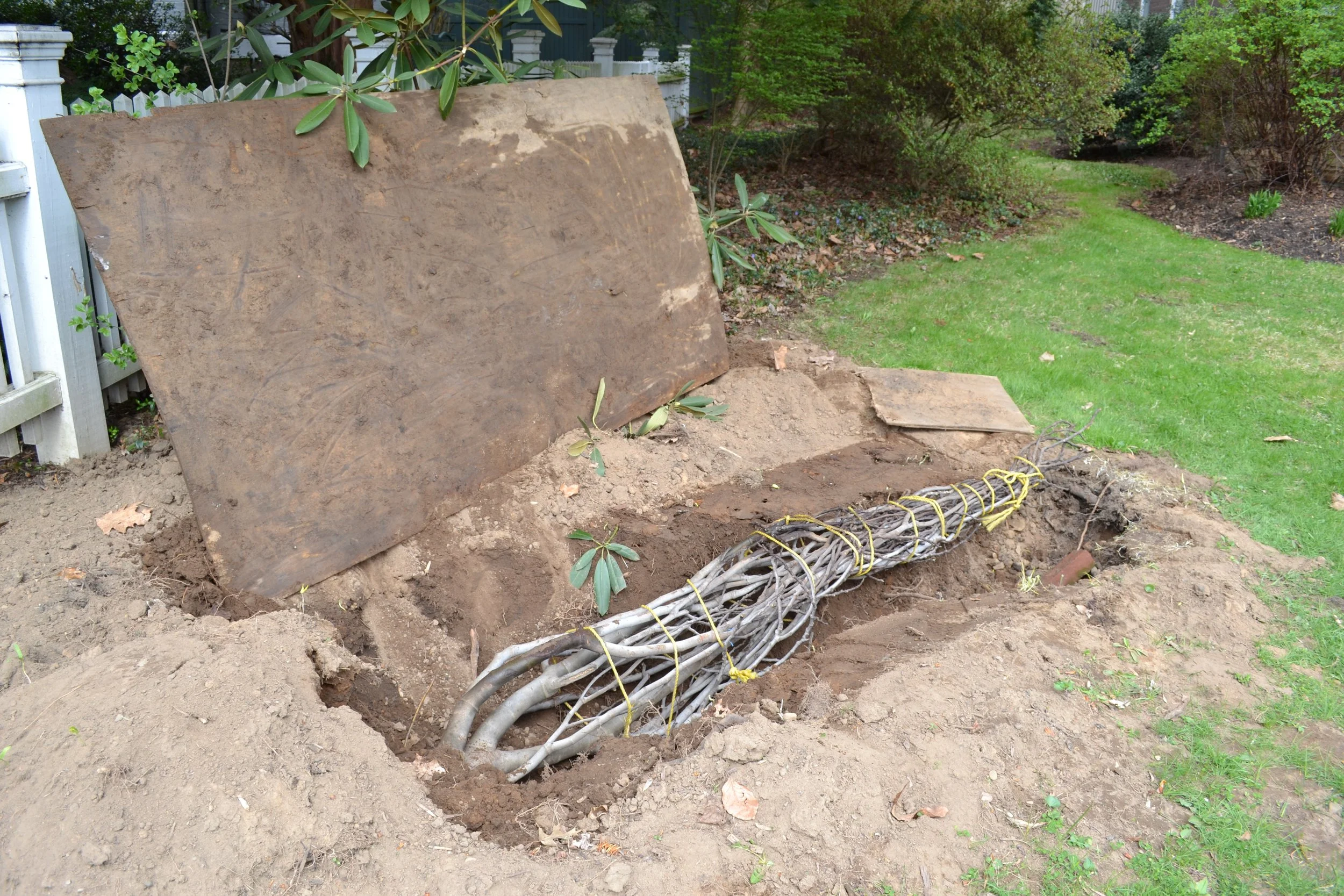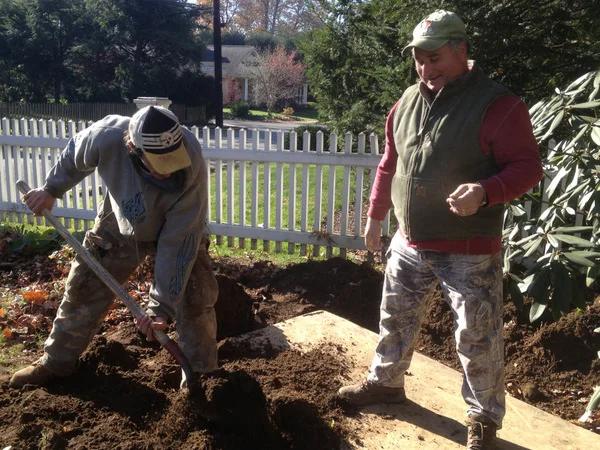Fall Fig Ritual: Protecting Your Tree for the Winter
Time to Tuck in Your Fig Tree
Post written mid-November
If you live in the northeast where we've had several very cold days and nights, don't panic if you haven't yet buried or covered your fig tree. It generally takes sustained freezing temperatures and icy winds to do permanent damage. You may want to do it soon though, before the next bout of cold weather. It's always a much more pleasant task when you don't end up wet and cold yourself.
Below are photos from last year, on November 18, when Michele and one of his landscaping employees, Craig, buried my tree.
I know by now to have a pot of espresso ready when Michele arrives.
They first bundled and tied the branches with rope and then dug the deep trench. My tree doesn't grow perfectly upright which makes it easier to lower into the hole. In the above photo, the soil around the roots has been loosened, so the tree is now leaning even more than usual.
While Craig continued to dig, Michele removed more dirt from around the roots and began to force the tree into the hole.
It's necessary to uproot the tree significantly, but not completely. Large roots remain intact on either side of the exposed roots.
The tree is touching very little soil. It is somewhat suspended in the hole.
A sheet of heavy plywood is used to cover the hole. Inside, the tree touches very little dirt. I've seen other methods that literally bury the tree itself and no plywood is used. (See photos at end of post).
The wood is covered with several inches of soil except for a small opening along one edge which allows air to circulate to keep the tree dry and free of mold and rot. The opening is sealed only during the coldest days of mid-winter.
The roots are not covered by the plywood, but rather mounded with a heavy layer of dirt.
Bruno Garofalo uses thick fabric to protect his trees before he covers them with dirt, not plywood. Some gardeners bury the tree bare.
Here Bruno's son-in-law is removing several layers of fabric surrounding the tree after digging it out from under about ten inches of soil in the spring. Whichever method you choose, the taste of that first fig next summer will make all the work worthwhile.










